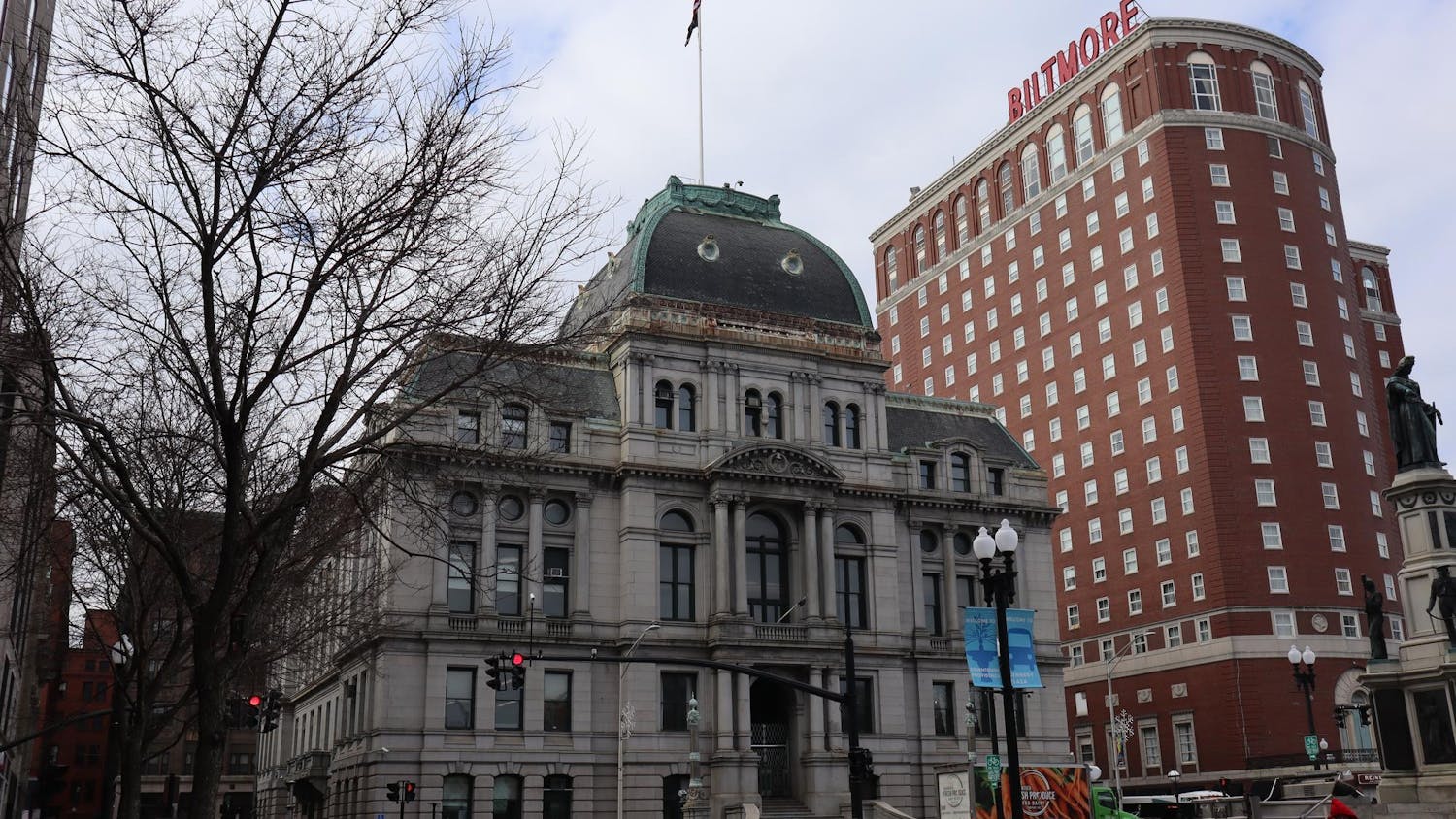The University may undertake an extensive renovation of the Dynamo House, a former power plant in the Jewelry District, in partnership with the nursing programs at the University of Rhode Island and Rhode Island College and a private developer, President Christina Paxson announced in a school-wide email June 27.
As part of the project, Brown would lease half the space for administrative and educational offices and URI’s and RIC’s nursing programs would occupy the other half.
A complementary proposed new building, located nearby in Davol Square, would offer apartment-style housing for 296 graduate, medical and nursing students, as well as retail and start-up space. A new parking garage would have a 600-car capacity, Providence Business News reported.
The Dynamo House, which the Providence Preservation Society named among the city’s 10 most endangered properties in 2012, has been vacant since 1999. Plans to redevelop the space, officially named the South Street Power Station, as a museum and hotel fell through in 2008 when the developer went bankrupt.
“We have been very concerned about the building,” said Arthur Salisbury, president of the Jewelry District Association.
“If (Dynamo House) had gone vacant and dark, it would be very hard to convince people that we have a vibrant Knowledge District,” said Colin Kane, former head of the I-195 Commission, referring to efforts by universities, the government, hospitals and start-ups to create a technology and innovation hub surrounding a high concentration of educational facilities.
The project is slated to cost around $206 million. The University has already invested more than $200 million in Jewelry District development and renovation over the past decade. The Dynamo House renovation would further “enliven the neighborhood,” Paxson said in a University press release. In recent years, local universities have built and rehabilitated buildings in the area as part of a larger project to stimulate science and technology development in the area and build a knowledge-based economy.
The University has received “consistent feedback from people in the Jewelry District that there’s not enough presence there,” said Russell Carey ’91 MA’06, executive vice president for planning and policy. It lacks “the activity and vibrancy that we see on College Hill,” he added.
“The types of uses being talked about bring people and energy,” Kane said. The building needs significant resources that only a big institution can provide, he added, and “absent this type of leadership, the building would have been left vacant.”
Commonwealth Venture Properties, the private developer working with the University, would be able to tap into $28 million in state historic tax credits and $26 million in federal tax credits throughout the project because the Dynamo House has been placed on the National Register of Historic Places. In return, the remodel would “have to be done with a high degree of sensitivity to preservation,” Kane said. These standards would require the University to maintain the current exterior and windows, Carey said. “Preserving the appearance and the footprint is essential, and an attraction to us,” he said. “It is an iconic building that means a lot to the community.”
Commonwealth would receive $16 million of city funding to build the parking structure.
It would also pay taxes on the property to Providence after working out an agreement with the city, said Laurie White, president of the Greater Providence Chamber of Commerce.
The project would advance the Alpert Medical School’s pursuit of inter-professional education by allowing nursing students and medical students to work in close proximity to one another, said Associate Dean for Medical Education Philip Gruppuso. Students would share teaching facilities and have the option to live near each other, he noted.
“It is something we’ve been working on for several years,” said Edward Wing, professor of medicine and former dean of medicine and biological sciences. Interdisciplinary education “is the future of medicine,” he said.
The development would also help the University free up space on College Hill for other academic priorities, Carey said, much like the recent move of the Admission Office to allow the Department of Philosophy to expand. But further development into the Jewelry District will depend on the availability of space in the area and future planning.
The project would be highly collaborative and require city and state leaders’ approval of the ideas and concept behind the redevelopment, Carey said.
“A project of this magnitude that would have many hundreds of people working there is part of the process of revitalizing the city,” said Provost Mark Schlissel P’15. “We’re very optimistic, but it’s not a certainty yet. There are still a lot of moving parts,” he added.
“Providence enthusiastically supports this project to redevelop the Dynamo House as a shared nursing, education, administration, student housing and retail center,” wrote Mayor Angel Taveras in a statement emailed to The Herald. “This project significantly advances our efforts to transform Providence’s Jewelry District.”
“I wasn’t excited about building a parking garage right on the waterfront,” Salisbury said, suggesting the University might consider a structure with a ground floor use. The Jewelry District Association will stay engaged in the planning process, he added. “They can’t get rid of us.”
Brown, URI and RIC will need to negotiate long-term lease agreements with Commonwealth in the next steps of the project, Carey said. The leases for URI and RIC will need approval from the Rhode Island State Properties Committee and the General Assembly.
Senate Finance Committee Chair Daniel DaPonte, D-East Providence and Pawtucket, indicated he would like to see some modifications to the plan before approving those leases, suggesting a cap on the rent charged to URI and RIC to ensure its affordability, the Associated Press reported.
Then Commonwealth will need to facilitate financial deals with stakeholders and engage in discussions with National Grid to negotiate burying the “big, ugly wires” next door, Schlissel said.
If all goes as planned, the University anticipates beginning construction in 2014 and completing the renovation in 2016, Paxson wrote.
The General Assembly passed a joint resolution one week prior endorsing the plan, and Gov. Lincoln Chafee ’75 P’14 P’17 called the renovation “promising.” The project has also received a stamp of approval from the Corporation, the University’s highest governing body, Paxson wrote.
A previous version of this article incorrectly identified Colin Kane as the former head of the I-195 commission. In fact, Kane is the current chairman of the commission.
ADVERTISEMENT




